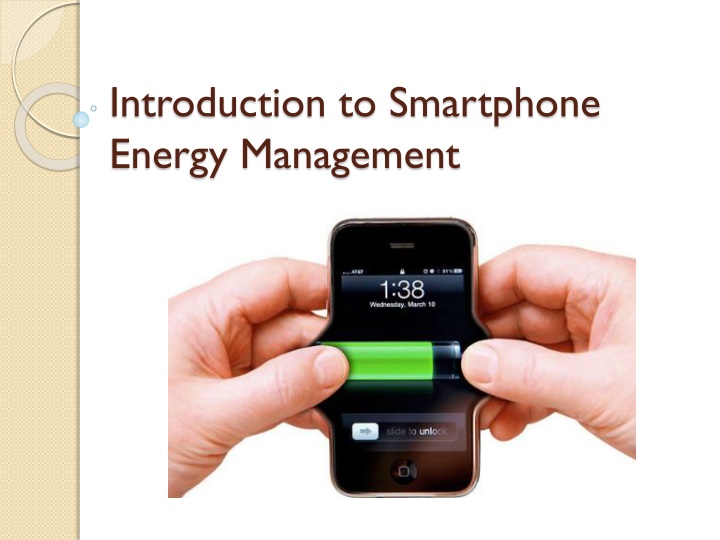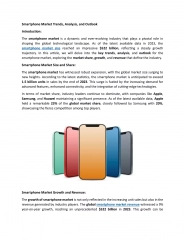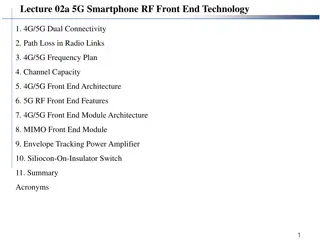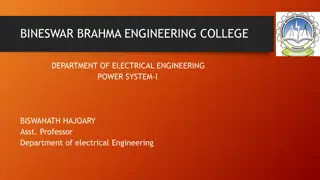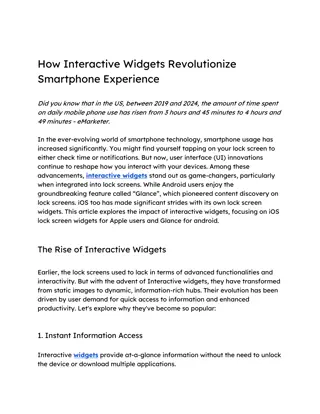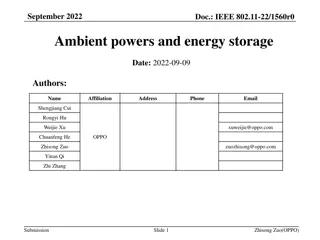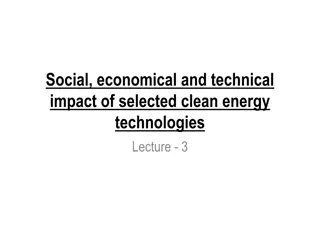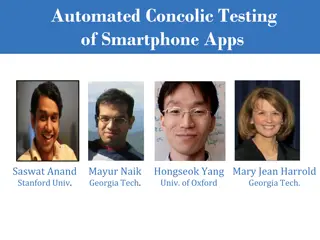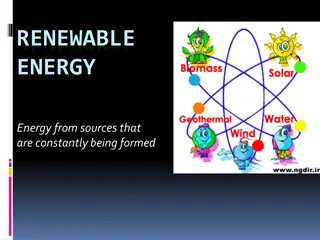Smartphone Energy Management: Overcoming Power Limitations
Smartphone energy management addresses challenges posed by finite power supplies in the face of expanding wireless services. Explore strategies such as protocol stack optimization, battery efficiency, and network-level battery management to enhance energy conservation in mobile devices.
Download Presentation

Please find below an Image/Link to download the presentation.
The content on the website is provided AS IS for your information and personal use only. It may not be sold, licensed, or shared on other websites without obtaining consent from the author.If you encounter any issues during the download, it is possible that the publisher has removed the file from their server.
You are allowed to download the files provided on this website for personal or commercial use, subject to the condition that they are used lawfully. All files are the property of their respective owners.
The content on the website is provided AS IS for your information and personal use only. It may not be sold, licensed, or shared on other websites without obtaining consent from the author.
E N D
Presentation Transcript
Introduction to Smartphone Energy Management
Issue 1/2 Rapid expansion of wireless services, mobile data and wireless LANs Greatest limitation: finite power supplies
Issue 2/2 Typical example of power consumption from a mobile device: o 36% Display o 21% CPU/memory o 18% Wireless interface o 18% Hard drive Goal o Incorporate energy conservation at all layers of protocol stack
Two different perspectives Increase battery capacity o Increase capacity while restricting weight o However battery technology hasn t experienced significant advancement in the past 30 years Decrease of energy consumed o Run CPU at lower clock rate, lower voltages o Flash memory (SD (Secure Digital) Memory Card)
Datalink Layer Battery Management Lazy Packet Scheduling: Reduce the power Increase the transmission time Battery-Aware MAC Protocol: Packets carry remaining charge. Lower back off interval for nodes with higher charge
Network Layer Battery Management Goal: Increase the lifetime of the network Shaping: If battery charge becomes below threshold, stop next transmission allowing battery to recover Battery Energy Efficient (BEE) Routing Protocol: Minimize energy and use max battery charge
Sources of Power Consumption Two types oCommunication related oComputation related Tradeoff between them
Communication related Three modes: o Transmit o Receive o Standby Example: o Proxim RangeLAN2 2.4 GHz 1.6 Mbps PCMCIA card 1.5W transmit, 0.75W receive, 0.01W standby Turnaround between transmit and receive typically takes 6 to 30 microseconds Optimize the transceiver usage
Power Management Modes Power consumption is always an issue with Mobile Devices. There are 3 modes of power for Cisco NIC cards: 1.Constant Awake Mode (CAM) Mode is best when power is not an issue such as when AC power is available to the device. Default mode 2. Power save mode (PSM) Mode is used when power conservation is the utmost importance. The wireless NIC card will go to sleep after a period of inactivity & periodically awake to retrieve buffered data from the AP. 3. Fast power save mode (FastPSM) Combination of CAM & PSPM For clients who switch between AC & DC power.
Computation related Usage of CPU, main memory and disk Data compression techniques for reduction of packet length increase power consumption
General Guidelines and Mechanisms 1/5 Reduce collisions in MAC oRetransmissions lead to power consumption and delays oCannot be completely eliminated due to user mobility and varying set of mobiles Change typical broadcast mechanism o802.11: Receiver keeps track of channel status through constant monitoring
General Guidelines and Mechanisms 2/5 Turnaround between transmit and receive mode spends time and power oAllocate contiguous slots for transmission or reception oRequest multiple transmission slots with a single reservation packet Computation of transmission schedule should be relegated to base station
General Guidelines and Mechanisms 3/5 Scheduling algorithm may additionally consider battery power level Allow mobile to re-arrange allocated slots under low-power conditions At link layer: oAvoid transmissions when channel conditions are poor oCombine ARQ (Automatic Repeat Request) and FEC (Flow & Error Control) mechanisms
General Guidelines and Mechanisms 4/5 Energy efficient routing protocols o Ensure all nodes equally deplete their power level o Avoid routing through nodes with lower battery power Requires mechanism for dissemination of node battery power o Periodicity of routing updates can be reduced May result in inefficient routes
General Guidelines and Mechanisms 5/5 OS level oSuspension of specific sub-unit (disk, memory, display etc.) when detect prolonged inactivity
Summary Battery Management: idling increases the capacity of the battery Transmission Power Management: Time/Signal Strength vs. Power tradeoff System Power Management: Put system/components to sleep whenever possible
